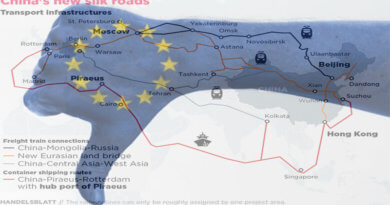China’s Strategic Encroachment: Satellite Images Reveal Escalation of Chinese Construction in Bhutan’s Contested Territories
By Tsering Choephel

DHARAMSALA, 13 Dec: A new set of satellite images reveals an escalation of China’s tactical settlement and road network building project in the contested area of Jakarlung Valley, Bhutan’s remote region in the north. The incursion occurs amidst the ongoing border talks between the two countries to demarcate their boundary formally, reported chatamhouse.org.
Jakarlung Valley, the disputed territory is part of the Beyul Khenpajong. It may become permanent Chinese territory once the border deal is announced, which is expected soon says the report.
Taking a cue from former Prime Minister Lotay Tshering’s statement that didn’t deny the possibility of a land-swap deal with China, the report speculates that Bhutan, in a major concession, will give up the land that China has seized in both Jakarlung and the neighbouring Menchuma Valley.
Despite the historical and cultural significance of Beyul Khenpajong to Bhutan, the government of Bhutan has been ineffectual in countering China’s encroachment on its territory. Professor Robert Barnett, an expert on Tibetan history, says this move of China “represents China making a very recent, doubtful claim about an area that is of great cultural significance to a far less powerful neighbour, knowing that the neighbour has few, if any, options as to its response.”
NDTV reported that satellite images of the valley show ongoing construction of at least 129 buildings, which appear to be residential quarters in one settlement and at least 62 buildings in a second enclave a short distance away. Images of the same area taken in August 2021 have none of these buildings in place, exposing China’s double-faced diplomacy: conducting border negotiations while also continuing its incursion into the neighbour’s territory.
Damien Simon, the co-author of the report of Chatamhouse said ”The sheer scale of this developmental activity emphasises that these villages are not merely isolated outposts but rather integral components forming a comprehensive ecosystem that supports China’s territorial ambitions, further contributing to the Sinicization of the Bhutanese landscape.’’
Sandwiched between the aggressive Chinese Communist Party (CCP) in the north and worried India in the west, the Bhutanese government’s silent diplomacy in dealing with these two giant countries, proving ineffective, is keen to resolve its border demarcations with China once and for all, to stall CCP’s expansionist strategy, according to several reports.
Roughly 763 square kilometres of land in the northwestern and central regions of Bhutan that China asserts claim over, the three main contested regions are Pasamlung and Jakarlung in the north near Tibet and Doklam in the west bordering India.
India recognises Doklam as an undisputed territory of Bhutan while Beijing claims it as an extension of Chumbi Valley in Tibet, which lies between Sikkim and Bhutan. Located close to the strategically important Siliguri Corridor, which connects the Indian mainland to its seven states in the Northeast, including the state of Arunachal Pradesh that CCP continues to regard as its territory, calling it ‘Southern Tibet’, India is committed to preventing the Doklam plateau from getting subsumed under China’s control.
In 2017, the Indian army physically prevented the extension of an illegal Chinese road in the Doklam area which led to a tense two-month-long standoff between the armies of India and China.
The India-China border of 3488 kilometres remains conflicted and unresolved, with several skirmishes and clashes occurring in the last few years, including the Galwan clash in June 2020 that led to the death of multiple Indian and Chinese soldiers. Many rounds of bilateral border talks between India and China have borne no concrete results so far
The Indian government has applied pressure on Bhutan to avoid conceding Doklam. According to the Chatamhouse report, until as recently as 2007, New Delhi guided Thimphu’s foreign policy in exchange for free-trade and security arrangements.
Bhutan and India stand out as the only two countries with which China has unresolved border issues. Following Bhutan’s Foreign Minister Tandi Dorji’s visit and meeting with his Chinese counterpart Wang Yi in Beijing in October this year during the 25th round of boundary talks, an expedited border demarcation between the two nations was announced with the likely establishment of diplomatic ties.
In WIRE’s report in October, Tshering, the then-Prime Minister of Bhutan, hinted that the demarcation of the Bhutan-China boundary would be settled at an early date. Still, regarding the trip-junction point with India, he said, “Doklam is a junction point between India, China, and Bhutan. It is not up to Bhutan alone to fix the problem. There are three of us. There is no big or small country; all are three equal countries, each counting for one-third.”
Past India’s decades-long control over Bhutan’s foreign policy, and the inevitable influence of China over Bhutan, the trilateral relations between the three neighbouring countries are undergoing recalibrated negotiations, the outcome of which only time will tell.





